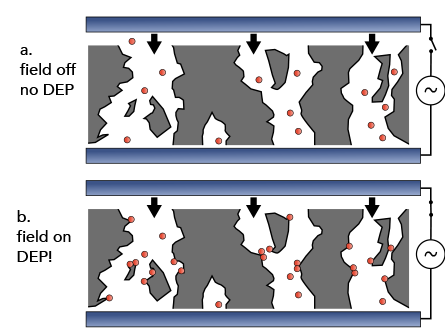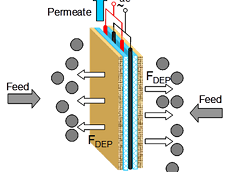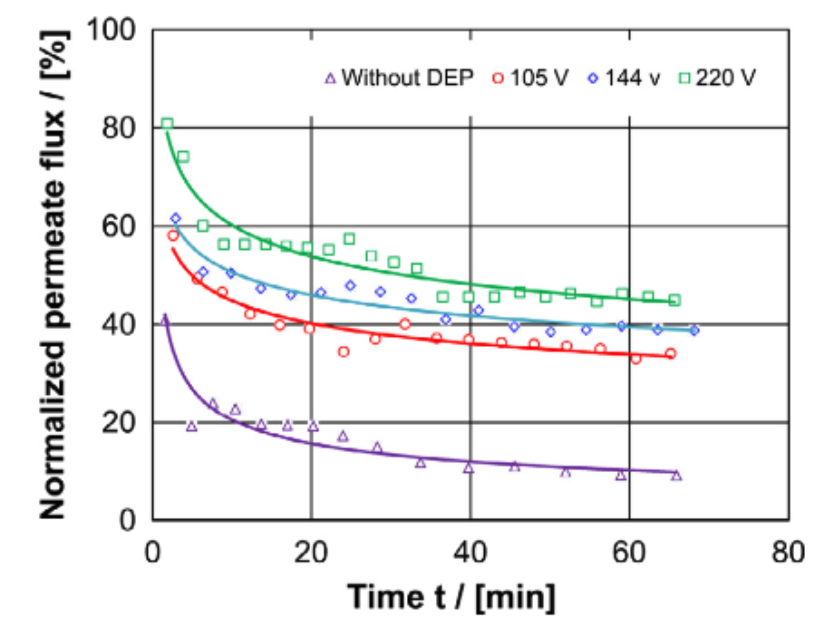Research Topics in the Field of Particle Separation
Dielectrophoresis (DEP) descirbes movement of charged or uncharged particles in inhomogeneous electric ac or dc fields. DEP is due to the action of a spatially non-uniform field on an induced dipole. It allows for techniques to separate particle mixtures that are difficult to separate using conventional methods. Examples include the separation of very small particles or the separation of particles showing only subtle differences in their properties, e.g., the separation of blood cells by type.
We use DEP for the separation of mixtures according to material and our focus is specifically the material-selective particle separation at high (industrially-relevant) throughputs. This is in contrast to most conventional DEP applications which are used for (bio-)analytical purposes and focus on low volumina at a high discriminatory ability. A good DEP overview could be found, for example, in the recent review of Hughes.

Most conventional DEP applications rely on microfluidic technology, that is, on small channel and electrode dimensions as well as on small throughputs. A scale up is difficult since the electric field gradient (which is causing particle movement) rapidly decreases with distance from the electrode array. We thus actively research DEP filtration to overcome this inherent limitations. In this, the nescessary field gradient is produced by distortion of the originally homogeneous field at insulating structures. These insulating structures could be, for instance, porous ceramic or polymer foams, which then serve as (electrically) switchable filters. With this concept, the field gradient is decoupled from the throughput, which allows operation at preparative or even industrial scale. If the filter structure is large enough, there is no filtration by size exclusion and trapped particles could be recovered when the field is turned off.


Due to fouling, which is the attachment of filtered (bio-)particles during membrane filtration processes, the flux constantly decreases over time in filtration, especially in bio membrane filtration. Conventionally, such fouling layers could be removed due to backwashing (i.e., reversal of flow direction). By introducing electrodes under or over the filter membrane, we are capable of producing inhomogeneous electrid fields, which could keep (bio-)particles from settling on the filter surface. This allows to effectively increase the time between backwashing steps by applying a (small) voltage on the electrode.

